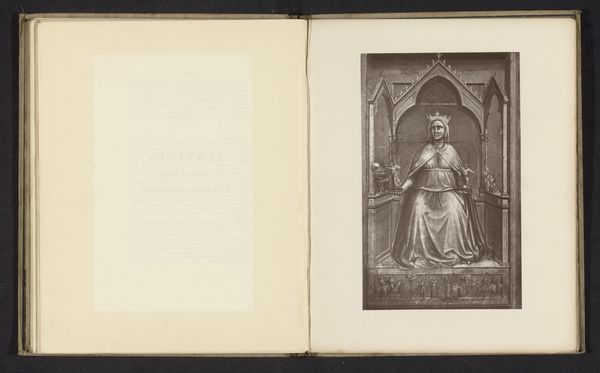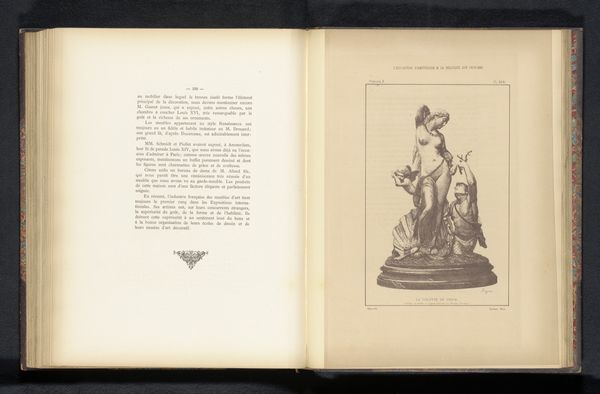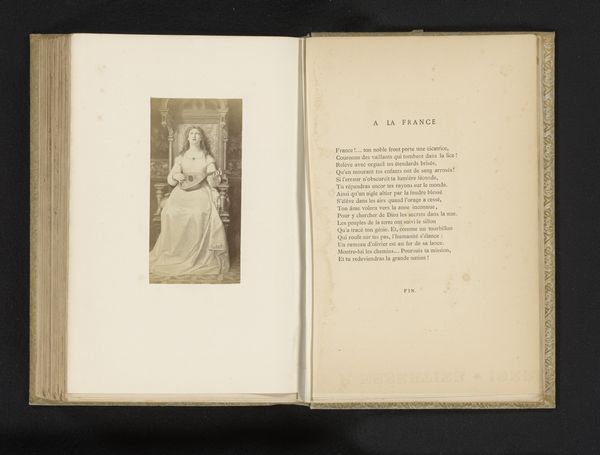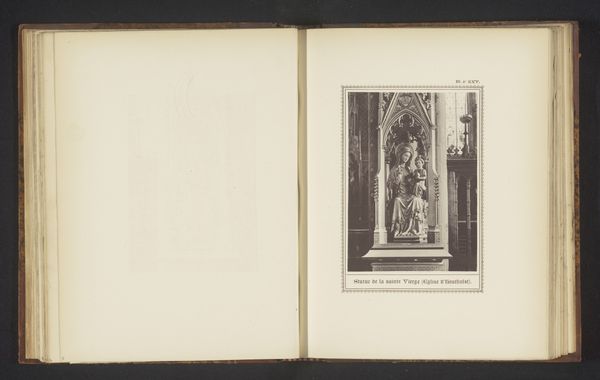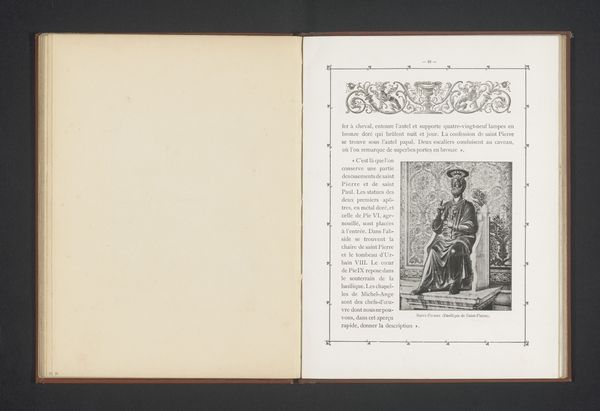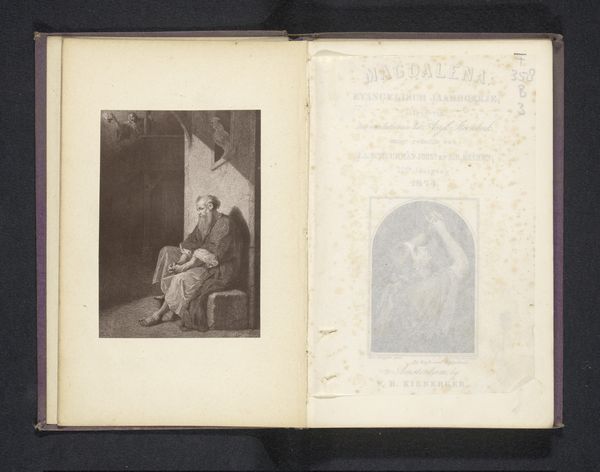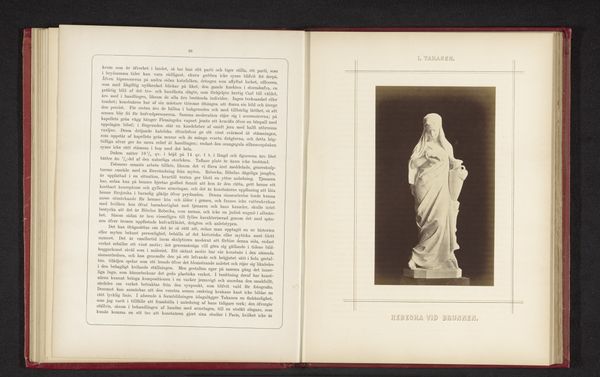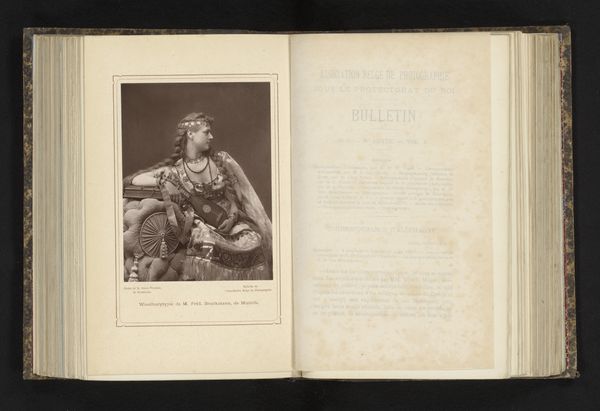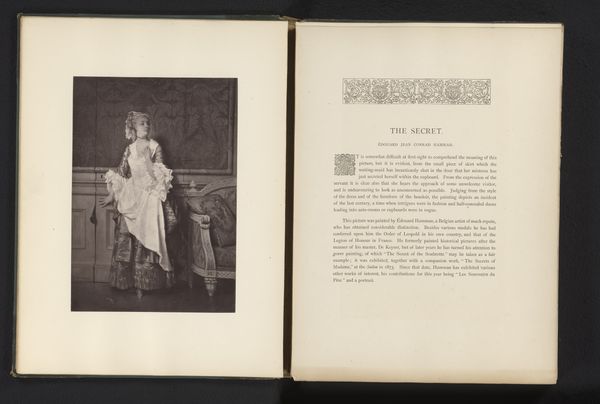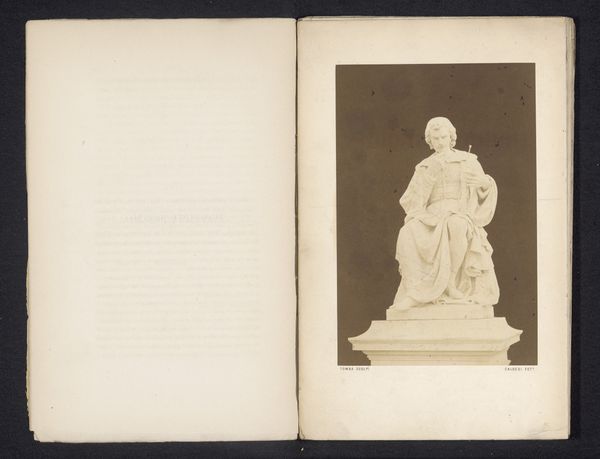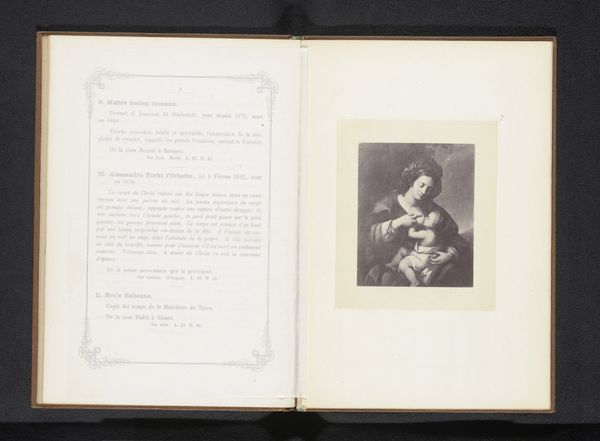
print, paper, sculpture
#
portrait
#
medieval
# print
#
paper
#
sculpture
#
history-painting
Dimensions: height 112 mm, width 82 mm
Copyright: Rijks Museum: Open Domain
Curator: This piece, dating back to before 1893, offers a look at a sculpture of Isabella I of Castile, immortalized through the print medium on paper. The original work aims for portraiture while clearly drawing on Medieval sensibilities. Editor: My first impression is one of contained energy. The figure, captured mid-motion, appears both regal and deeply devout. There's a clear pyramidal composition that leads the eye up to her serene face, which is framed by a softly draped hood. It almost vibrates with pent-up zeal, despite its stillness. Curator: Let’s consider this print then not just as a record of the sculpture but as its own art object, where the tonal range within the grayscale captures and disseminates the gravity the figure projects. Editor: Exactly. The use of light and shadow creates a fascinating interplay on the fabric of her garments, almost giving life to the folds. It gives this otherwise somewhat severe figure softness that contradicts the impression of political might. It really plays with that juxtaposition of her role as both monarch and a devout follower. Curator: Furthermore, it speaks to her carefully managed image and brand, both while living and posthumously, the politics of image and idealogy so clear. Her position as a kneeling figure shows the strength of the religious narratives of the time and this particular print reinforces a constructed past that privileges specific narratives. Editor: Yes, that enforced reverence adds another layer. Even if someone were previously unaware of who this is a portrait of, there's a visual rhetoric that strongly cues power tempered by piety. But the artist clearly balances a need for both representation and interpretation; after all, we are still receiving mediated information, where our experience of Isabella is mediated by this composition of form and tone. Curator: And mediated, as we noted, across medium and historical eras: what’s lost and what’s gained in this visual conversation between object and reproduction and dissemination? It all creates this space for nuanced considerations. Editor: Precisely. Considering the constraints and artistic license taken, this allows one to contemplate themes such as representation and history in a captivating dialogue.
Comments
No comments
Be the first to comment and join the conversation on the ultimate creative platform.

